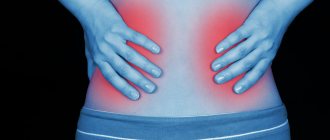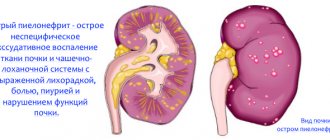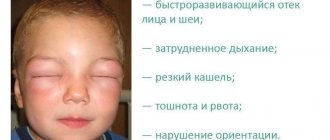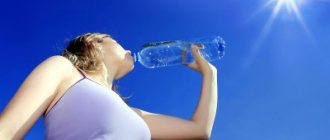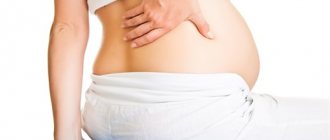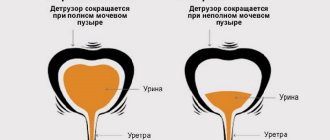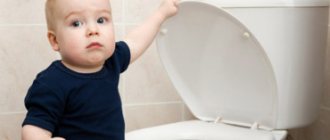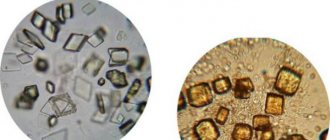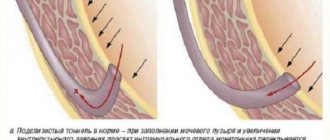Pyelonephritis can occur in a child at any stage of development. By paying attention to several important symptoms in a timely manner, you can cure your baby and protect him from many problems that this disease leads to in the future.
Consulting a doctor in this case is extremely necessary, since any disease can lead to complications affecting the kidneys. To avoid childhood pyelonephritis , it is not necessary to allow the child to become hypothermic, which can lead to colds, and it is also necessary to observe the rules of personal hygiene. Doctors say that the presence of an infection in a child, for example, caries, sore throat, runny nose, has a detrimental effect on the general condition of a person, including the kidneys. Diseases of the genitourinary system in children are not uncommon. It is in children, especially in infancy, that they tend to develop rapidly.
Reasons contributing to the development of pyelonephritis
In order to understand the principle of the development of a disease such as pyelonephritis, it is necessary to delve into the anatomy and find out the structure of the vulnerable organ.
The kidneys are located on both sides of the lumbar vertebrae behind the peritoneum. The right kidney is located slightly lower than the left, as it borders the liver. The size of the organ depends on the age of the child. The kidneys of newborns reach a length of 4 cm, and in adolescence their size exceeds 12 cm in length and 6 in thickness. The kidneys perform a very important function for the body - they remove metabolic products along with urine, thereby regulating the water-salt balance in the body and maintaining homeostasis.
In addition, it is the kidneys that are responsible for the production of vitamin D and substances necessary to maintain normal hemoglobin levels in the blood and regulate blood pressure. They are needed to ensure the proper functioning of the heart, brain and other organs. The kidneys are responsible for the balance of calcium and phosphorus and contribute to the formation of bone tissue.
Types of pyelonephritis characteristic of children
According to symptoms and therapeutic treatments, pyelonephritis can be divided into two types.
Primary pyelonephritis
It develops in children when the internal intestinal microflora changes from normal to pathogenic. Often dysbiosis can occur against the background of certain diseases, namely ARVI or intestinal infections. Dysbacteriosis is a common cause of pyelonephritis in children. An equally common cause of the disease is coccal infections; these can be a variety of diseases, from skin diseases to sore throat or colds. The basis for primary kidney disease can be diseases of the genitourinary system, due to which bacteria enter the body, and then through the bladder, ureters and pelvis they penetrate to the kidneys.
Secondary pyelonephritis
Secondary kidney disease occurs for completely different reasons. In children, this is usually associated with the presence of congenital abnormalities of the urinary system, such as malposition of the kidneys, bladder, and ureters. This leads to poor urine flow or backflow to the kidneys from the lower tract. Along with urine, bacteria are often introduced into the kidney, which cause inflammation.
In some children, the kidneys do not have time to develop. Too small a kidney size affects their productivity. At birth, this is not too noticeable, but the weight of the body grows over time, and at the same time the load on the kidney tissue increases, which can no longer cope with the load. Such anatomical deviations appear already in the first months of a baby’s life. To identify the problem in a timely manner, doctors advise conducting an ultrasound examination of the child to make sure that the kidneys are of normal size and do not have pathologies, and if abnormalities are detected, this will allow immediate treatment to begin.
Physiotherapy
The main goal of physiotherapy is to activate the process of outflow of stagnant urine, sanitize all infectious foci, suppress inflammatory processes and increase the protective reaction of the child’s body.
Depending on the form of the disease and the degree of development of the pathological process, the following techniques may be recommended:
- Warming compresses.
- Paraffin compresses.
- Exposure to high-frequency electric current on the lumbar region.
- Taking warm baths.
- Use of healing mud.
- Sodium chloride baths.
The whole complex of procedures will eliminate pain and also increase the volume of urine excreted by the child’s body. Such procedures can be carried out during periods of subsidence of the active phase of the inflammatory process. Before performing physical therapy, you should make sure that there is no elevated body temperature and poor general health.
Signs and symptoms of pyelonephritis
The following symptoms may indicate the presence of an inflammatory process in the child’s kidneys:
- Heat. An increase in body temperature above 38 °C without symptoms of colds, headache, general malaise, weakness, decreased or complete lack of appetite.
- Incontinence or lack of urge to urinate. The baby eats normally and consumes the usual amount of fluid, but does not go to the toilet for too long. At night the child sleeps poorly and suffers from constant urges, the smell of urine has become pungent.
- Complaints during urination. The child complains of pain in the abdomen, cries, screams, sits on the potty for a long time and makes an effort before urinating.
- Discharge color.
Urine in the absence of abnormalities is a clear, light yellow liquid. If the color of the urine has become dark or it has acquired a reddish tint, this may indicate kidney disease, in particular pyelonephritis. But don't panic too early; urine may be colored atypically by foods such as beets, blueberries, rhubarb, carrots, vitamins and medications. If the child has not eaten such foods, the color of the discharge may have changed due to the presence of red blood cells, which is an alarming signal.
- Liquid stool, vomiting. In infants, signs of pyelonephritis may be similar to intestinal diseases and may be accompanied by poor weight gain.
- Small amounts of urine. This symptom should not be ignored. You should immediately consult a doctor to find out the causes, establish a diagnosis and prescribe treatment.
- Pyelonephritis may not be accompanied by severe symptoms. Constant fatigue and bad mood of the baby are a reason to pay attention to his health.
Drugs
Without the use of medications, treatment of pyelonephritis is impossible.
After confirming the suspected diagnosis, the doctor will prescribe medications to reduce the severity of general symptoms:
- To reduce high temperatures: Ibuprofen, Paracetamol.
- Anti-inflammatory drugs: Voltaren, Ortofen.
- Means for relieving pain and spasms: No-spa.
- Uroseptics (Canephron N) are drugs necessary to relieve infection in the urinary tract. They are able to stop the proliferation of pathogenic microflora at the local level and perform protective functions.
- Vitamin complexes to increase the body's defenses.
Taking antibiotics is the main method of combating the disease. The doctor should prescribe a specific drug after receiving the results of an examination to determine sensitivity to specific groups of drugs, as well as after identifying the causative agent - bacteria.
At the beginning of treatment, broad-spectrum antibiotics can be prescribed, after which they should be replaced with narrowly targeted drugs: penicillins, cephalosporins. The general course of antibacterial therapy is 4 weeks, and the drug is replaced every 6-10 days.
Diagnosis of pyelonephritis
To confirm the diagnosis, the urologist prescribes tests. First of all, this is a general urine test. If such an analysis does not provide a complete picture, then a urine test is prescribed according to Nechiporenko or Zimnitsky.
The essence of urine analysis according to Nechiporenko is that material is collected only from the middle of the stream, and discharge at the beginning and at the end of urination is considered unusable.
To perform a urine test according to Zimnitsky, you will need to collect all your urine for the day. To do this, you need to prepare containers for urination in advance and promptly offer the child to urinate in them. There is no need to specifically give your baby liquids or limit food intake. Such an analysis is needed to identify an inflammatory process in the kidneys or kidney failure.
When collecting urine for analysis, you must adhere to the following recommendations:
- You should not give your child mineral water to drink, as it will affect the composition of urine.
- Prepare glass containers in advance. Wash it well and pour boiling water over it to prevent bacteria and fungi from getting inside.
- Before collecting urine, pay attention to the baby’s hygiene, otherwise the tests will give inaccurate results.
- When urinating, do not collect the first portion of urine.
Test results will be ready a couple of days after the urine is sent to the laboratory. Each type of analysis uses its own research method.
Classification
Based on the nature of its appearance, two types of disease are distinguished:
- Primary PN occurs as a result of an inflammatory process in one of the organs.
- Secondary – develops against the background of an abnormal structure or dysfunction of the urinary tract.
According to the characteristics of the inflammatory process, PN can be acute or chronic. The course of the acute form does not exceed 2 months. After treatment, the child recovers.
Chronic PN lasts more than 6 months with periodic relapses. During the latent course of this form of the disease, changes in normal parameters are detected in tests, but outwardly symptoms do not appear.
Relapse of the chronic form can be caused by the same pathogen. If another is detected, the disease is considered acute.
The classification of the disease and its complications are presented in the diagram:
Interpretation of urine test results
You can understand the test results yourself. In addition to the color and smell of urine, there are many other indicators.
- Urine should be completely clear. The presence of cloudy impurities and flakes indicates inflammation in the urinary system.
- The reaction of urine in a healthy body is slightly acidic or neutral. This indicator depends on the baby’s nutrition. In babies, the density of discharge is lower than usual, it is in the range of 1005-1020. There should be no protein in the urine at all, but a small amount of it is allowed, not exceeding 0.033 g/l. The content of leukocytes is different in boys and girls. For boys the norm is 0-3-5, for girls – 0-5-7. In the study according to Nechiporenko - up to 2000.
- There should be no red blood cells in the urine; in Nechiporenko’s study – up to 1000.
- The presence of casts indicates possible kidney disease. The study according to Nechiporenko allows their content, but within 20.
- Fungi and bacteria are indicated in the results with a plus sign. At higher values, urine culture must be performed to determine the type of bacteria.
At the end of the examination, the doctor will explain the urine test to the parents. He also prescribes an ultrasound of the kidneys and pelvic organs.
Prohibited Products
Pyelonephritis in a child, the symptoms of which may be similar to other diseases, can be confirmed by a doctor only after a complete examination. Based on the results, a diet will be selected for the child, according to which you should avoid foods that may irritate the kidneys during treatment.
These include:
- Cocoa, strong tea.
- Legumes.
- Fatty broths from meat and fish.
- Mushrooms and mushroom broths.
- Sauces with added harmful ingredients.
- Carbonated drinks.
- Spices and seasonings.
- Salty cheeses.
- Smoked meats.
- Convenience foods, fast food.
- Chocolate and other sweets.
- Canned products.
- Radish, onion, radish, sorrel.
In the first days of nutrition, it is necessary to create a diet based primarily on vegetables and fruits. After you feel better, you can gradually expand your diet, starting with eating cereals with milk. It is recommended to completely avoid fried foods during the treatment period. Even a small amount of prohibited foods can cause an acute painful attack.
How to prevent the development of pyelonephritis in a child?
Simple steps will help prevent pyelonephritis in children
- Put disposable diapers on your baby, especially before going outside and going to bed. This will reduce the chance of contracting an infection.
- Monitor your child's urination frequency. The longer the discharge remains in the bladder, the more germs it accumulates. Potty train your child by the age of two.
- The girl needs to be washed properly. Hand movements should go from front to back. Maintain hygiene and daily change of linen.
- You should not give your baby highly carbonated drinks. Preference should be given to table mineral or simple purified water.
- Do not feed your child fatty, spicy and salty foods. Salt should be added in moderation, and it is best to steam the meat.
If you have pyelonephritis and after recovery, you will need to adhere to a special diet prescribed by your doctor.
Standard number of urinations per day for a baby
Healthy babies urinate very often, and in fairly large portions.
Children under 6 months make about 20 urinations per day, up to one year - 15, up to three years - about 10.
Even if the child appears to be absolutely healthy, keep track of how many times a day he goes to the potty. If the baby wears a diaper, then this will be impossible. You need to observe the process of urination itself; the stream should not be interrupted, and the liquid should be light.
Folk remedies
The use of alternative medicine will be aimed at increasing the child’s immunity, relieving inflammation and increasing the frequency of bladder emptying:
- Watermelon can be added to your diet as a good diuretic.
- 3 tsp lingonberry leaves pour 1 glass of hot water and cook over low heat for 10-15 minutes. After this, the broth is filtered and taken throughout the day.
- 2 tsp Parsley fruits are crushed and poured with two glasses of purified water. After infusion for 24 hours, the infusion is taken 3 times a day, 2-3 tablespoons.
Tea made from aspen bark will significantly reduce the manifestation of the disease. To do this you need to take 2 tbsp. raw materials and fill them with 1 glass of water. Boil the bark for 7-10 minutes. and allowing the broth to cool, you should take the product 50 ml three times a day.
Before using any method, you should consult in advance with a doctor, who will make a reasoned decision on the possibility of additional use of folk remedies.
Treatment of pyelonephritis
When treating pyelonephritis in children, uroseptics or antibiotics, homeopathic remedies and herbal medicine are used.
The duration of treatment and medications can only be determined by a nephrologist or urologist. Treatment often lasts a couple of months. The disease is curable and after a complete recovery you will no longer have to worry about the baby’s well-being. After treatment with antibiotics, probiotic preparations are prescribed, which are required to restore normal microflora in the intestines.
Every six months, the baby should have a kidney examination, tests, and systematically visit a pediatrician and urologist.
Authorized Products
Products that can be consumed during a diet to treat a disease include:
- Vegetable soups.
- Butter and vegetable oil.
- Fruits and berries, as well as compotes based on them (watermelon, pumpkin, cranberries, apples, currants).
- Vegetables: potatoes, cauliflower, tomatoes, cucumbers, beets, zucchini, carrots.
- No more than 70g of sugar per day.
- Sweet tea is not strong.
- Pasta.
- Cereals.
- Lean meats and fish.
- Dairy and fermented milk products.
- Wheat bread.
- Eggs.
If the acid-base balance is disturbed, a deficiency of vitamin K may occur. To compensate for the deficiency, it is recommended to eat dried apricots, raisins, almonds, walnuts, bananas, peaches, and apricots.
This diet will allow you to get all the essential vitamins and minerals needed to maintain a healthy immune system. As for sweets, small amounts of marmalade and marshmallows are allowed.
